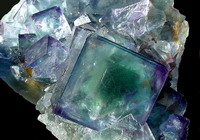Login form
Minerals
 Have you ever thrown a rock? Ever seen a diamond ring? Ever added salt to your food? If you have, then you’ve had a close encounter with minerals.
Have you ever thrown a rock? Ever seen a diamond ring? Ever added salt to your food? If you have, then you’ve had a close encounter with minerals.
WHAT’S A MINERAL?
Minerals come mainly from rocks. To be considered a real mineral, a substance has to occur naturally and it has to come from inorganic material. Inorganic means not created by living things. Oil and coal, for example, come from the remains of ancient plants. So they’re not considered real minerals, at least by scientists.
But water is! It’s one of only two minerals that naturally occur as a liquid. (The other is the liquid metal mercury.) Think about that the next time you drink a glass of water: You’re drinking a mineral!
MINERALOGY
The study of minerals is called mineralogy. Scientists called mineralogists identify and name minerals. They figure out how minerals form. They examine mineral structure and study mineral properties. These properties include how hard the mineral is, how it reflects light, how it breaks, and how it reacts to chemicals.
Mineralogists also determine the structure and content of a mineral. Most minerals are combinations of different chemical elements. Table salt, for example, is a combination of the elements sodium and chlorine. Some minerals can come in pure form, like with a pure gold nugget.
There are thousands of types of known minerals. They are used for all kinds of things.
All metals are minerals. So anything made using metal is made using minerals. Anything made from clay, such as a ceramic mug, is made from minerals. Minerals called silicates are used to make glass. Granite, limestone, and other hard minerals are used as building materials. Colorful minerals can be ground up and used in dyes. Minerals were even used to make parts of the computer you’re working on!
MINING
Useful minerals aren’t normally found just lying around. They have to be dug from the ground and separated from other minerals.
Taking a mineral from the ground is called mining. Usually, the desired mineral is mixed with other minerals underground. Miners first have to dig up lots of rocks that contain several different minerals. The mineral being mined is then separated out, or extracted, from the others in the rocks.
Sometimes the desired part of the mineral has to be purified even further. Iron, for example, often occurs in a mineral called hematite. Hematite is made of iron combined with oxygen. Once the hematite has been mined and separated from other minerals the iron has to be separated from the oxygen.
Through much of history, the search for minerals has attracted explorers. Mineral resources have brought about the development of regions and have brought wealth to countries rich in minerals.
PRECIOUS MINERALS
Some minerals are considered particularly precious. They are valuable because they are rare and beautiful. Gold and silver are good examples. Both are valuable and beautiful metals, but because gold is harder to find, it’s more valuable.
Other precious minerals are called gemstones, or gems. Gems are mainly used in jewelry but are also valued for their hardness. People value gems like emeralds and rubies for their color. Gems are also valued for their luster. Luster is the way the gem reflects light.
Diamonds are the most lustrous of minerals. They are a favorite for jewelry. But diamonds are also the hardest of all minerals. So they are used for things that require a very hard material. The drill used by your dentist probably has diamonds on it. A saw with diamond teeth can cut through steel!
Source: Microsoft ® Encarta

